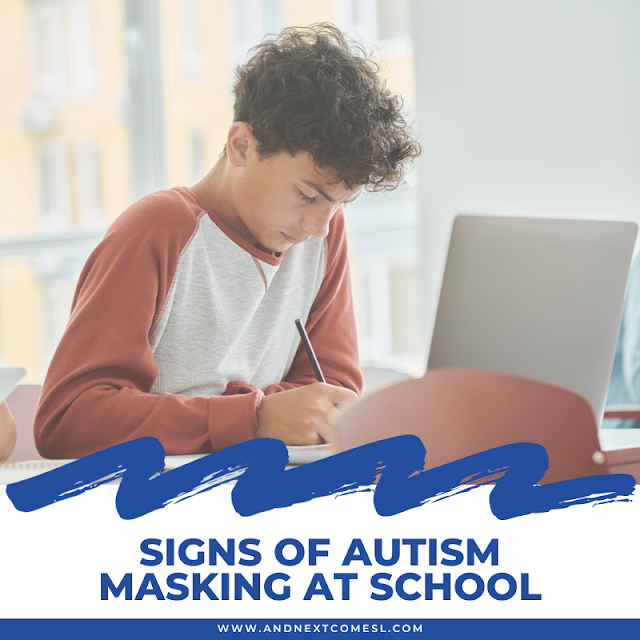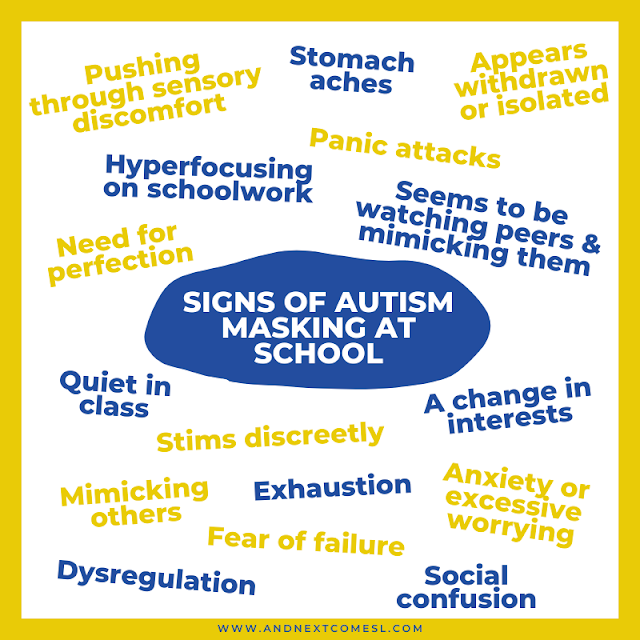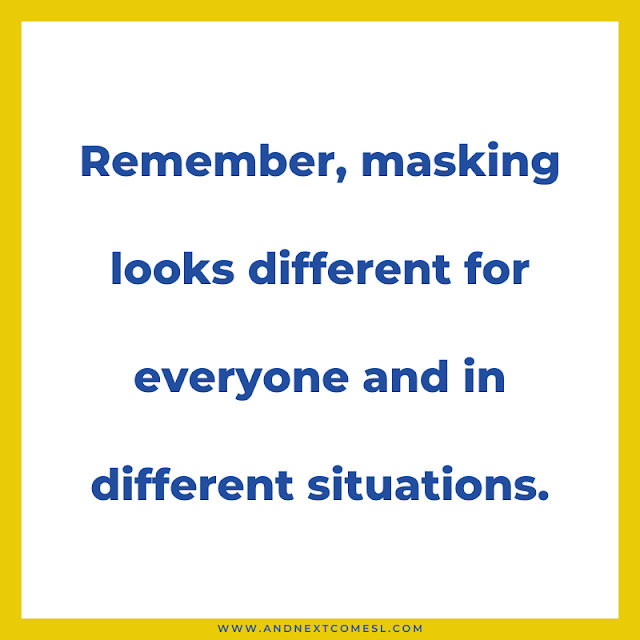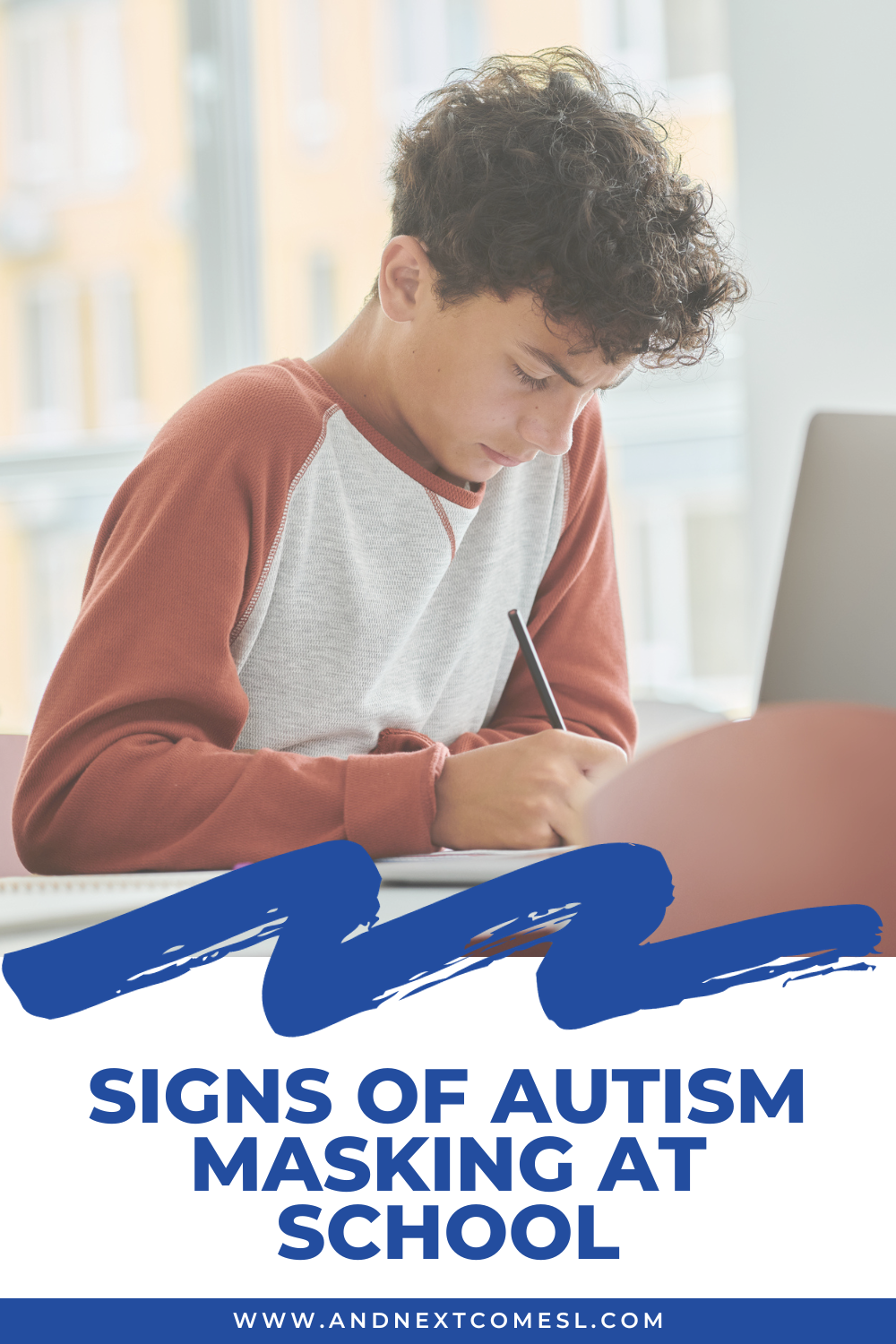If you're familiar with the signs of autism masking in children, then you already know that it can sometimes feel like schools and parents are sometimes describing two completely different children.
The child seems to act or behave one way at school.
Then another way entirely at home.
That's why it's important for school staff and teachers to be familiar with autistic masking too. They need to understand that sometimes our autistic kids put on a mask to better fit in or perform well at school.
But what are the signs of autism masking at school? What does it look like? And why is it important for schools to know what autism masking is? Well, let's take a closer look.
Why it's Important for Schools to Know About Autistic Masking
An autistic child who is good at masking might get overlooked in the classroom. For instance, their learning needs might not be well understood, which means they also won't be well supported. That could mean that their sensory needs go unmet or the appropriate accommodations don't get put in place.
In other words, autism masking can lead to delayed intervention and a lack of appropriate support.
When a child masks, their struggles might also go unnoticed. Or, worse yet, others might not believe their struggles. That can lead to overwhelming demands or unrealistic expectations in the classroom. Something that happens quite often with hyperlexic children due to their strength in reading (read more here).
A child who's constantly overlooked or has hidden their struggles might find it difficult to advocate for their needs. Especially if others won't believe their struggles due to autistic masking.
Another thing to consider is that a child who masks might be continually overestimated in the classroom. That can lead to anxiety and stress, overcompensation, and perfectionism. It can also lead to low self-esteem simply because they feel they can't live up to those expectations.
On the flip side, a child who masks could be underestimated. Teachers, staff, and even peers might not have an accurate idea of the child's true potential. They might not presume competence, for instance.
School staff and teachers might also miss identifying any potential unidentified autistic children, especially when those children are really good at masking. Teachers can often be the first to point out autistic traits to parents and, if those traits get missed, it could potentially lead to delayed diagnosis or identification.
So, being aware of the signs of autism masking at school is valuable information because it reminds teachers and school staff that a child might still be autistic, even if they're really good at hiding it.
It's also important that teachers and school staff consider the possibility of autism masking when setting up their classrooms. For example, teachers should consider the following questions:
- How can you make the classroom more sensory-friendly?
- How can you build an inclusive culture that promotes greater social acceptance?
- How can you accommodate diverse learning styles?
Considering these questions can help teachers create a space where kids can feel safe enough to unmask.
Signs of Autism Masking at School
It can be helpful to revisit this list of signs of autism masking in children before reading further. Especially since you might notice some of those same signs in the classroom.
Sometimes, though, masking at school can look quite a bit different than it does in other environments. After all, different situations may require different types of masking behaviors.
Keeping these things in mind, here are some example signs of masking that teachers can watch out for in the classroom:
- Anxiety or excessive worrying
- Panic attacks
- Stomach aches
- Exhaustion
- Dysregulation
- Seems confused by social situations or social rules
- Fear of failure or making a mistake and the need for perfection
- Appears withdrawn or isolated
- Quiet in class (which differs from what parents say about the autistic child at home)
- Stims discreetly
- Seems to be watching peers and mimicking them (i.e., a quiet observer)
- A change in their interests (e.g., may avoid talking about special interests or suddenly lose interest in a topic)
- Mimicking others' actions, behaviors, tone, or emotions
- Pushing through sensory discomfort and/or ignoring sensory needs
- Hyperfocusing on schoolwork (as a way to avoid social interactions)
Remember, this list of signs isn't exhaustive. Instead, it's meant to give you an idea of things to watch out for in the classroom.
You may notice some other behaviors that aren't on this list and that's okay. Remember, masking looks different for everyone and in different situations.
A Summary of Kids who Mask at School
When autistic kids mask at school, their true needs can go unnoticed and unsupported. That can lead to delayed intervention, a lack of accommodations and proper support, and difficulties advocating for the child's needs.
Or worse yet, their struggles won't get recognized or believed, which can lead to overwhelming demands, high or unrealistic expectations, or being constantly overestimated. That, in turn, puts a tremendous amount of stress, anxiety, and pressure on an child who's already trying their best to keep it all together and/or fit in.
So, if you suspect a child might be masking at school, look for signs such as anxiety, exhaustion, dysregulation, discreet stimming, mimicking peers, confusion over social rules, and so on. Then work with the child and their parents/guardians to find ways to help support them in the classroom (tips for doing so will be coming soon!).
Hopefully you found these signs of autism masking at school helpful. Perhaps you'd like to learn about some strategies for supporting autistic students who mask at school next.









